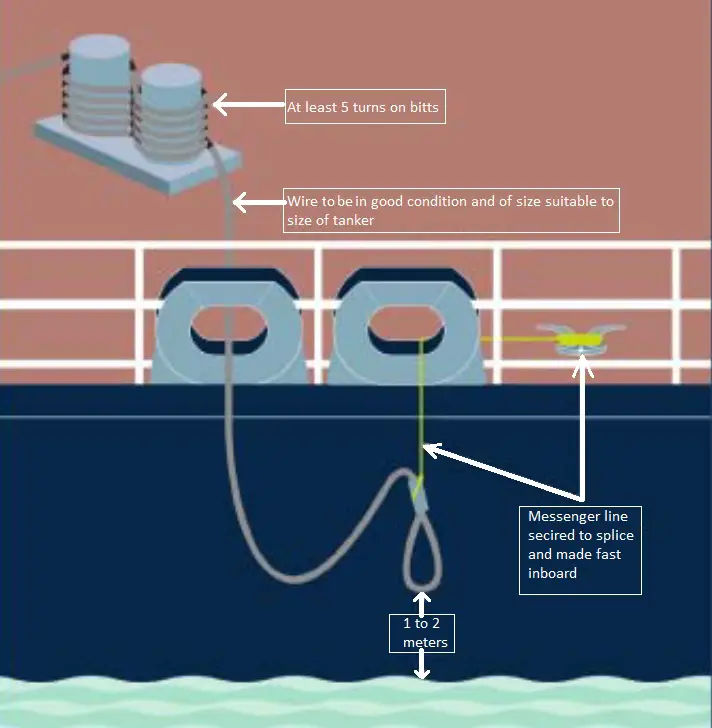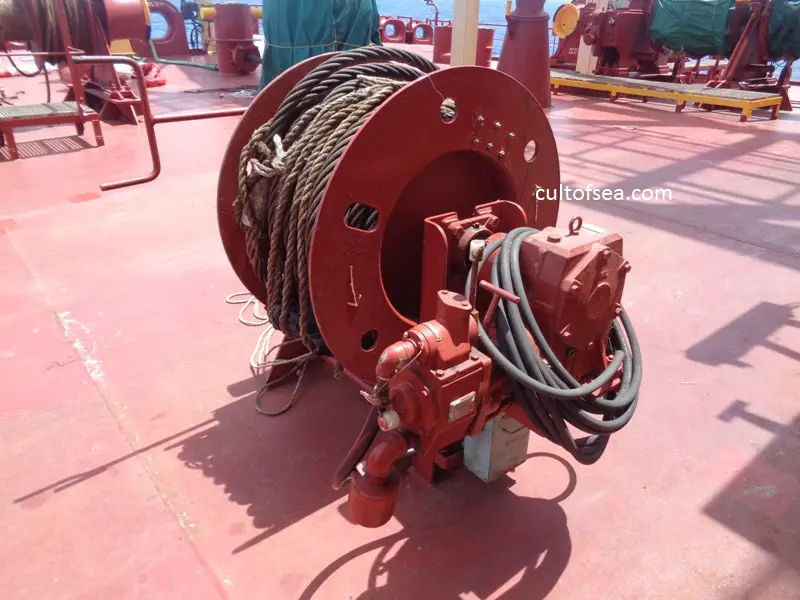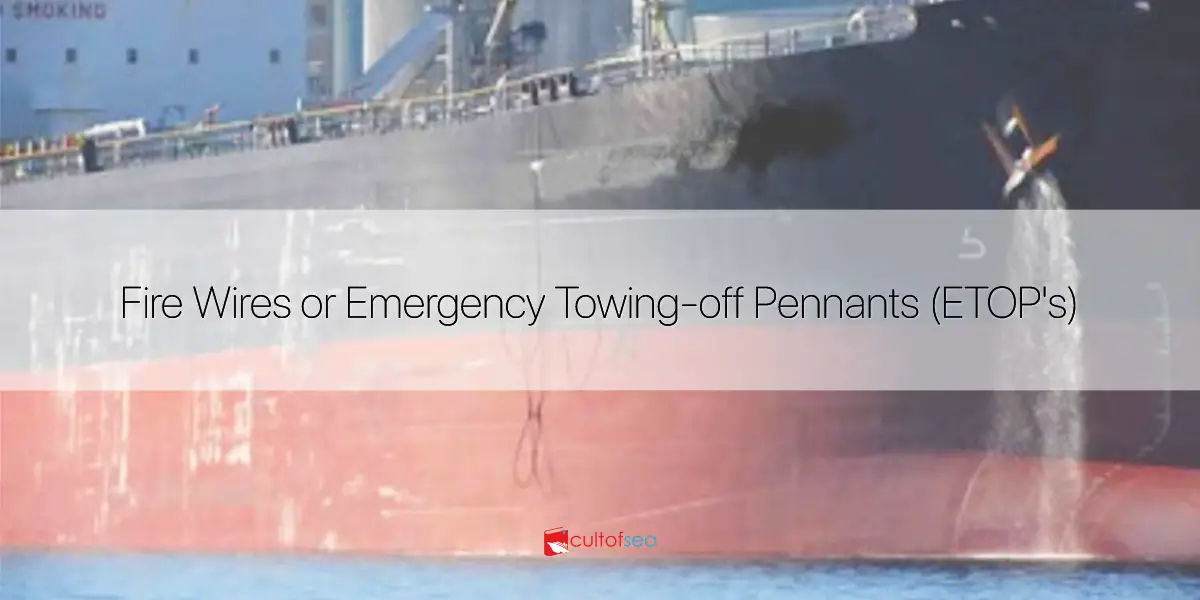Contents
Recommendations
MEG 4 (4.7 Emergency tow-off pennants)
OCIMF does not support the use of emergency tow off pennants although some terminals may still require them when tankers are moored alongside.
Any requirements for emergency tow-off pennants should be subject to review and risk analysis by terminals to determine whether or not there should be a requirement for ships to deploy them. Questions that should be asked include:
- Are emergency tow-off pennants really necessary and what is the possibility of them being used?
- Do the terminal emergency procedures require a ship to be removed from the berth if it is immobilized by fire?
- Is it possible to release the ship moorings to permit the ship to be removed from the berth?
- How long will it take for tugs to be mobilized?
- Could the deployment of emergency tow-off pennants compromise security arrangements for the ship and terminal?
- What personnel resources are available on the ship and at the terminal to allow it to be safely removed from the berth in an emergency?
Some terminals require different methods and operators should be aware of local requirements.
ISGOTT Edition 6 (22.3.1 Tanker’s mooring eqipment)
The use of emergency tow-off pennants is not recommended by OCIMF. However, some locations require them to satisfy local rules and regulations. More information is available in OCIMF’s Lloyd’s Register Risk Assessment of Emergency Tow-off Pennant Systems (ETOPS) Onboard Tank Vessels.
The existence of “fire wires” or, more correctly, emergency tow-off pennant systems (ETOPS) is based more on history and having “always done it that way” than necessity. Historical data shows no documented evidence of their use. At the same time, the tanker industry has evolved bringing the practicality of ETOPS into question. With the continued occurrences of injuries, both minor and serious, to vessel personnel deploying and recovering ETOPS, it is time to discontinue the routine practice of deploying ETOPS.
MEG 3 (3.12 Emergency Towing-Off Pennants)
MEG3 recommendation is obsolete, however contrary to above recommendations, some terminals require fire wires to be rigged and positioned. Unless the terminal specifically advises, emergency towing-off pennants (fire wires) should be positioned. This is to be discussed during Pre-Berthing Terminal information exchange or in Ship Shore Safety Key meeting with the Terminal.

MEG3 – Rigging of Emergency Towing-off Pennant
If required, emergency towing-oft pennants are commonly provided at the offshore bow and quarter. If required at a buoy mooring the emergency towing-off pennants will be rigged on the opposite side to the hose string. To facilitate emergency release using emergency towing-off pennants, they should be secured to bitts with a minimum of five turns and be led directly to a ship side chock with no stack on deck. The outboard end of the line is provided with an eye to which a heaving line is attached and led back, to the deck. During loading or discharge, the heaving line is periodically adjusted to maintain the eye of the emergency towing off pennant on to two meters above the water as shown above. Some terminals require different methods and operators should be aware of local regulations.

FireWire Stowed on Reel
When not in use, the pennants are preferably spooled onto reels which may be located on or below deck. Emergency towing-off pennants should be of 6 x 36 IWRC construction and be made of the same type of steel as recommended for standard mooring wires as per MEG. The use of synthetic or natural fibre ropes that do not have appropriate fire-resistant characteristics is not permitted as these would burn in the event of a fire. However, synthetic fibre ropes may be considered for use in the future if they are developed with adequate fire resistance. Their use will ease the handling difficulties often associated with wires. In view of their low coefficient of friction, more than five turns may be necessary when securing them to bitts. The following table provides guidance on minimum strengths and lengths for various ship sizes. However, lengths may vary depending on the positioning of mooring bitts and the ship’s freeboard.
| DWT | MBL | LENGTH |
| Less than 20,000 | 30 tonnes | 25 m |
| 20-100,000 | 55 tonnes | 45 m |
| 100-300,000 | 100 tonnes | 60 m |
| 300,000+ | 120 tonnes | 70 m |
Emergency towing-off pennants should not be attached to a set of bitts with an SWL that is less than the MBL of the pennant. It should be noted that for bitts (double bollards), the SWL marked on the bitts should be the maximum allowed when using a wire rope belayed in a figure of eight near the base of the bitts. This will be half the maximum permissible SWL when a single eye Is placed over one post.
Below is an example of wire rope and bitts on a Tanker ship with DWT 120,000:
- Fire Wire Located on Aft Deck
- SWL of Bitt and Chock
Wire Rope Specifications on a Tanker Ship with DWT 120,000



Leave a Reply